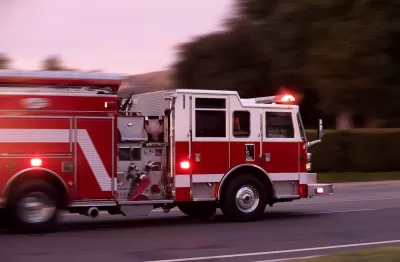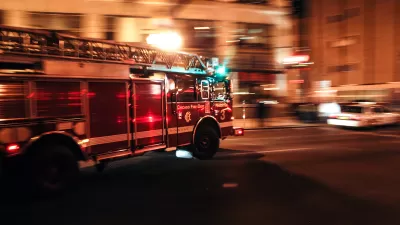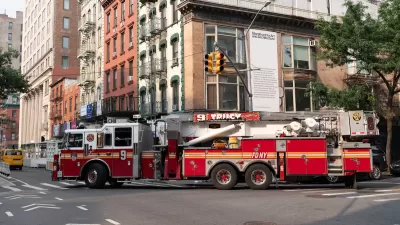Despite common concerns that narrower traffic lanes and bike infrastructure can slow emergency response, response times in one study didn’t change.

A study that sought to quantify the impact of road diets on emergency response times found that “there was virtually no difference in emergency response travel time (in min/km) after a road conversion compared to before, both in total and when they looked at specific road diets.”
As Jonathan M. Gitlin explains in Ars Technica, a research team from the University of Iowa surveyed first responders. Roughly half of the first responders surveyed believed there was no change in response time, while a third believed response times slowed down and 16 percent thought response times became faster.
The team then looked at specific response times from three fire districts in Cedar Rapids, Iowa where road diets were installed, finding no change in response times. The study is an important part of the debate over traffic calming tools such as lane width reduction, which has been shown to improve traffic safety — thus also reducing the need for emergency response to traffic crashes.
FULL STORY: Bike lanes and narrowed streets don’t slow emergency vehicles

Alabama: Trump Terminates Settlements for Black Communities Harmed By Raw Sewage
Trump deemed the landmark civil rights agreement “illegal DEI and environmental justice policy.”

Planetizen Federal Action Tracker
A weekly monitor of how Trump’s orders and actions are impacting planners and planning in America.

The 120 Year Old Tiny Home Villages That Sheltered San Francisco’s Earthquake Refugees
More than a century ago, San Francisco mobilized to house thousands of residents displaced by the 1906 earthquake. Could their strategy offer a model for the present?

In Both Crashes and Crime, Public Transportation is Far Safer than Driving
Contrary to popular assumptions, public transportation has far lower crash and crime rates than automobile travel. For safer communities, improve and encourage transit travel.

Report: Zoning Reforms Should Complement Nashville’s Ambitious Transit Plan
Without reform, restrictive zoning codes will limit the impact of the city’s planned transit expansion and could exclude some of the residents who depend on transit the most.

Judge Orders Release of Frozen IRA, IIJA Funding
The decision is a victory for environmental groups who charged that freezing funds for critical infrastructure and disaster response programs caused “real and irreparable harm” to communities.
Urban Design for Planners 1: Software Tools
This six-course series explores essential urban design concepts using open source software and equips planners with the tools they need to participate fully in the urban design process.
Planning for Universal Design
Learn the tools for implementing Universal Design in planning regulations.
Clanton & Associates, Inc.
Jessamine County Fiscal Court
Institute for Housing and Urban Development Studies (IHS)
City of Grandview
Harvard GSD Executive Education
Toledo-Lucas County Plan Commissions
Salt Lake City
NYU Wagner Graduate School of Public Service





























